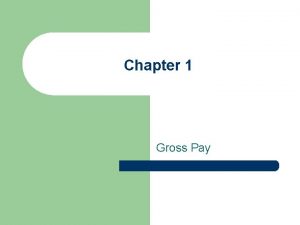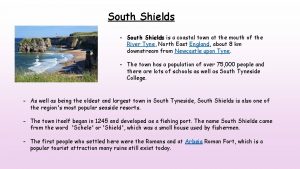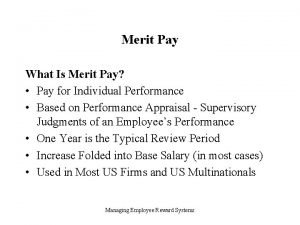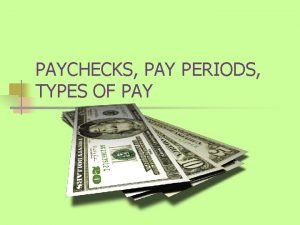Adam Shields Sarah Purdy What is Pay Pal







- Slides: 7

Adam Shields Sarah Purdy

What is Pay. Pal? Pay. Pal is an online payment service that allows individuals and businesses to transfer funds electronically. The idea behind Pay. Pal is simple, it uses encryption software to allow people to make financial transfers between computers. Pay. Pal is now one of the world’s primary methods of online payments. Although occasionally Pay. Pal does have a few faults, such as fraud, lawsuits and zealous government regulators. Pay. Pal now boasts over 100 million active accounts in 190 markets worldwide. The main uses for Pay. Pal are: • Send or receive payments for online auctions • Purchase or sell goods and services • Make or receive donations • Exchange cash with someone

How does Pay. Pal work? Pay. Pal is an online financial transaction broker, Pay. Pal lets people send money to each other's email addresses. During the transaction at no time will either party see the other's credit card or bank information. In order to use Pay. Pal the only requirements are a valid email address and valid credit card or bank account. Pay. Pal has three account types: Personal, Premier and Business. All these account types can use the following core Pay. Pal functions: • Sending money • Requesting money • Using auction tools • Making payments from a Web site • Debit card services • Customer service


Advantages to Pay. Pal • Credit card security - When signing up for a Pay. Pal account, a user types in the credit cards and bank accounts they wish to use for purchases one time on the Pay. Pal secure system • Flexibility - Pay. Pal relieves users of the embarrassment and hassle of trying to purchase goods and services online to then have their credit card declined. • Send money - Whether sending money to a child at college or a friend in trouble across the globe, Pay. Pal users can instantly transfer money to them by simply clicking a mouse. • Online Auctions - How could anyone talk about Pay. Pal without mentioning e. Bay? Pay. Pal is integrated with the online auction powerhouse, users can place bids and make purchases safely. • Discounts - : Pay. Pal sponsors special discounts for customers that shop with Pay. Pal at selected retailers. Users who visit www. paypal-shopping. com can find the latest special offers from popular companies such as HP, Nike, etc.

Disadvantages to Pay. Pal • Time - Pay. Pal is somewhat time consuming to set up. You need to verify funds they deposit into your bank account. If you don't have immediate access to that information, it could take weeks to get your statement. • Fraud - Pay. Pal is very vulnerable to fraud. If someone cheats, it's you as the seller who'll be paying the price when it happens (and it will), either by losing the money or getting your account frozen. • Customer Service - Pay. Pal is famous for their lousy customer service (or lack thereof). This includes hiding their phone number and only sending out automated responses to emailed queries. • Refunds - If someone complains to Pay. Pal about a product you delivered to them, they get to keep the product and you still have to refund the money. • Accounts - Pay. Pal has a large number of people who hate it-- most of them people who've had their accounts with thousands of dollars frozen and had to try and chase Pay. Pal for months to get it back, if ever. • Merchants - Many people consider Pay. Pal a merchant account for online business amateurs, and believe that professionals have a "real" merchant account

• 88% of Pay. Pal customers are under age 55, compared to 74% of non-Pay. Pal customers • 16% of Pay. Pal customers reported income of £ 46, 000 or more, vs. 12% of non-Pay. Pal customers • 15% of Pay. Pal customers reported having finished graduate school, vs. 11% of non-Pay. Pal customers Pay. Pal is a growing investment and is the main use by younger generations. This means that in the future Pay. Pal could become the most popular use of transactions, or the only one. Depending on whether or not technology creates something even more advanced. as Pay. Pal is so popular though it is likely to just be developed.













